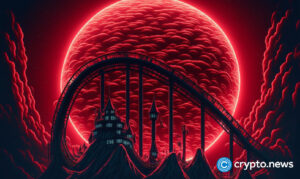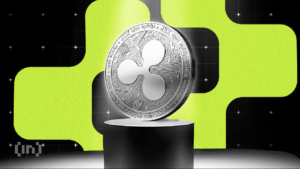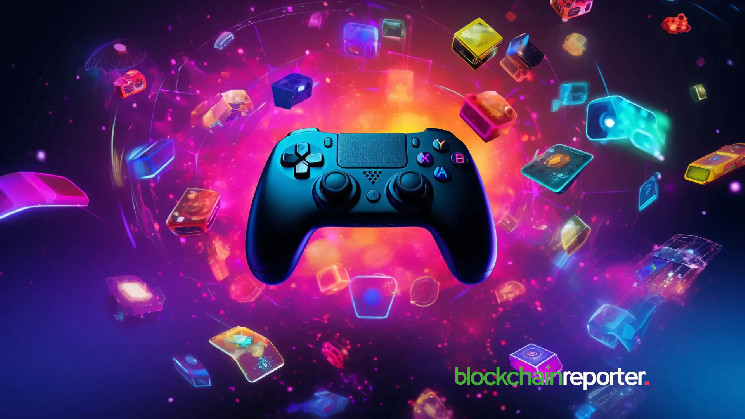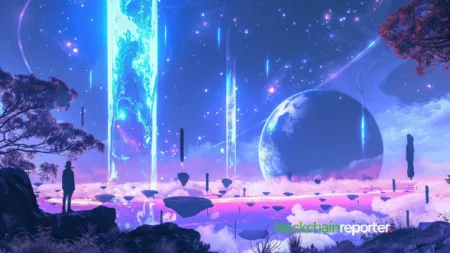Every third Web3 user plays crypto games. In May 2024, the number of daily unique active wallets in GameFi exceeded 3 million, setting a new all-time high.
As blockchain games amass new audiences, the existing infrastructure becomes insufficient, and projects devise new dedicated solutions that take scalability to new heights. This way, the GameFi industry has become one of the primary growth drivers of Layer-2 and Layer-3 solutions.
Introduction
GameFi, the blockchain gaming world has quickly emerged as one of the essential sectors in Web3 with a third of users who now play crypto games.
This has risen sharply as of May 2024, with daily unique active wallets peaking to roughly more than 3 million.
This notable growth in the number of players and games demonstrates that there is an increasing demand for powerful gaming infrastructure that can handle the complex needs of modern blockchain games.
So far, developers have since been taking forward strides in developing own-purpose solutions to plug in those gaps- that is, blockchains tailored explicitly for games (yielding the big fancy benefits of scalability, performance & UX).
Why Do Crypto Games Move to Their Own Blockchains?
The Ethereum main Layer-1 network’s poor scalability became evident as early as the 2010s, less than three years after the platform’s launch. As the legendary CryptoKitties congestion crisis unfolded, people paid tens of dollars and waited hours to buy a funny cartoon kitty. That had to change.
Developers started to build layer-2 solutions — blockchains on top of the main Ethereum network. L2s bundle multiple transactions into one on Ethereum Layer 2 and process them on Ethereum Layer 1, thus preserving the security of the main network while adding scalability. The technology significantly reduced gas prices: transaction fees dropped to just a few pennies.
Today, the industry has outgrown this, too. Layer-2 solutions’ throughput no longer meets games’ growing transaction volume demand, while UX improvements require reducing gas fees to nearly zero. Moreover, the more complex the game, the more customization it needs.
This challenge is addressed by Layer-3 solutions — blockchains on top of L2s that inherit Ethereum’s security and offer a few more features unattainable in Layer-2s. Each game uses its dedicated L3 blockchain, which opens up many novel opportunities.
L3 Solutions: performance, customizability, and governance
Layer-3 solutions introduce a whole new level of throughput. Recently, Ethereum L2s and L3s combined hit a new all-time high of 246 transactions processed per second, with 101 TPS executed on just one gaming-focused Layer-3 chain, Xai. In comparison, Ethereum’s base layer only processes 12-15 transactions per second.
When a game runs on its own blockchain, there are no competitors with whom to share network capacity. There are other L3s and L2s on Ethereum, but rollup technology makes transaction sizes so small that new records in TPS have become possible.
Running a dedicated blockchain allows developers to customize parameters, such as block size, block time, and consensus mechanisms, to better suit their game’s unique requirements. Individual configurations can be implemented, such as computing with algorithms other than EVM, using different data formats, or running confidential transactions not displayed on the L2.
When a game is run on a separate network, developers have the freedom to control their game and the entire environment in which it evolves. This leads to more agile decision-making and the ability to quickly implement updates and improvements without negotiating with other network participants (since none exist).
Game-Specific Chains: Examples
Several types of solutions stand out among game-specific blockchains. The first is L2s specifically built for GameFi products. The most popular among them is Ronin, which was used by 836,000 unique wallets daily in May. The blockchain hosts some of the most popular blockchain games, including Pixels and Axie Infinity.
Layer-3 solutions appear even more promising. Although not yet the most popular in terms of transaction volume, they offer unique opportunities for developers. For example, Arbitrum Orbit is a platform on top of Arbitrum, an Ethereum L2, which allows anyone to launch their own L3 app chain permissionlessly and leverage enhanced customization.
What Does This Mean to Users?
For users, the increased use of L3 solutions ensures an unprecedented improvement in UX. The first benefit is high-speed transaction processing. Ethereum L2s and especially L3s boast record-breaking throughput these days: as network congestion goes down, players wait no longer than a few seconds before their transactions are approved.
Second, Web3 games are often criticized for complex user experience: gamers must manually sign a bunch of transactions, ensure they always have some coins to pay gas fees, and manage the safety of their private keys. Account abstraction, introduced in the Ethereum ecosystem, has made the Web3 gaming experience indistinguishable from Web2 and shows exceptional results on Layer-3 networks.
PlayBlock, a dedicated L3 blockchain solution for the Playnance GameFi ecosystem and the leading Layer3 blockchain solution on Arbirum Orbit with 1.2M daily transactions, is a good example. Layer 3 technology helps drastically reduce transaction fees so they are fully covered by Playblock, while users experience fee-free transactions.
Players can join the game without a crypto wallet, as it’s created automatically. Playnance’s infrastructure goes even further, solving the main problem of competitors by allowing users to top up and withdraw money with one click using crypto and card. Beyond that, Account Abstraction technology eliminates the need to manage a seed phrase or sign multiple transactions.
Interoperability is the third benefit: in most games, in-game assets are locked within one title. With the advent of interoperable gaming ecosystems, developers create entirely different games within a single blockchain environment, while users are free to move their assets across or capitalize on them for a rare, immersive user experience.
More Than Just GameFi
The growing needs of the GameFi sector have pushed the development of app-specific blockchains. Custom L2 and L3 solutions offer unprecedented flexibility, fast transaction processing, and zero gas fees. The convergence of these needs with emerging technology solutions will propel the game-specific blockchain sector forward, introducing innovative solutions and advanced GameFi products.
Ultimately, these advancements will finally pave the way for GameFi’s rapid expansion and set the stage for the entire Web3 industry to onboard millions of newcomers.
Read the full article here









